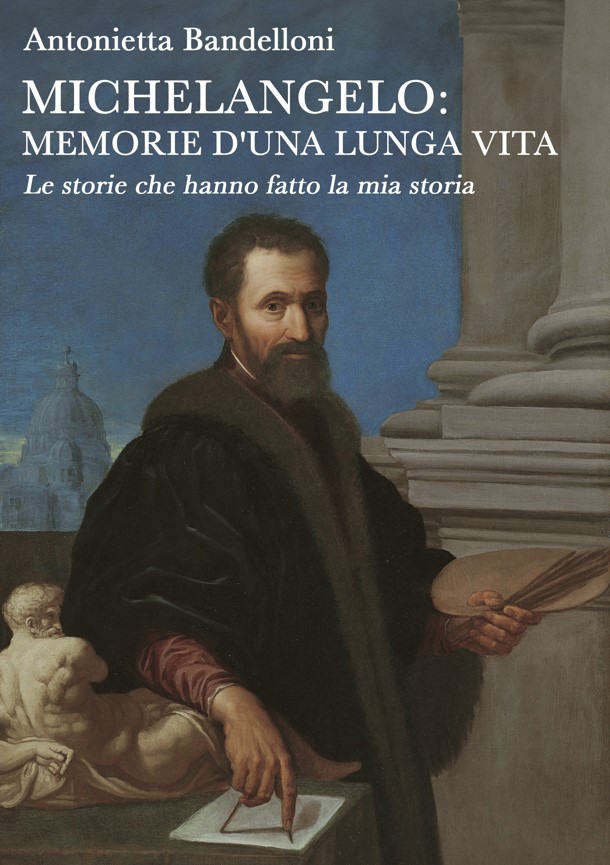La protezione del David e delle altre opere durante la Seconda Guerra Mondiale
I venti di guerra erano sempre più impetuosi e oramai si percepiva che presto un nuovo e sanguinoso conflitto avrebbe avuto inizio. Il 5 giugno del 1940 Giovanni Poggi, l’allora soprintendente delle gallerie fiorentine, ricevette una circolare urgente e riservatissima direttamente dal ministero di Roma.
In questa missiva veniva ordinato di mettere subito in atto tutti i provvedimenti predisposti per tutelare il patrimonio artistico in caso di conflitto armato. Solo cinque giorni più tardi l’Italia sarebbe entrata in via ufficiale in guerra.

Questo è il corridoio della Galleria dell’Accademia di Firenze che precede la tribuna del David durante la Seconda Guerra Mondiale. L’opera che vedete senza protezione è una copia di un mio schiavo che si trova al Louvre: ecco perché non è stata coperta.
ENG: This is the corridor of the Galleria dell’Accademia of Florence that precedes the David’s gallery during the Second World War. The work you see without protection is a copy of a slave of mine in the Louvre, which is why it was not covered.
Le misure da prendere erano state già decise da tempo mediante cicli di conferenze e pubblicazioni che iniziarono quando la Prima Guerra Mondiale ancora era in corso. La legge 1089/1939 stabiliva quali fossero le misure da attuare che a dirla tutta non erano solo atte a proteggere effettivamente le opere ma venivano sfruttate come macchina di propaganda fascista. Avevano bisogno di paventare un’efficienza assoluta in ogni campo, compreso quello della protezione del patrimonio.
Nelle fasi iniziali della guerra il pericolo dei bombardamenti dei centri storici delle città era abbastanza remoto. Più che altro il pericolo era costituito dalle schegge di proiettili della contraerea e dalle vibrazioni che a lungo andare avrebbero potuto staccare porzioni importanti di prestigiosi affreschi.
Si iniziò a proteggere le sculture con gabbie in legno e sacchi di sabbia, coprendo poi la sommità con tettoie di eternit. Le fondamenta di alcune Chiese e palazzi storici furono rinforzate come ad esempio quelle della Basilica di San Lorenzo a Firenze.
Mano a mano che passava il tempo si capì che con molta probabilità sarebbero stati bombardati anche centri storici importanti come quello di Firenze e le misure prese fino a quel momento per la protezione del patrimonio artistico parevano davvero inadeguate.
Dall’autunno del 1942 le protezioni con il legname e i sacchi di sabbia dovettero essere sostituite con apposite coperture in muratura. Il corridoio della Galleria dell’Accademia che porta alla tribuna del David assunse un aspetto a dir poco surreale. I prigioni, la pietà Palestrina, il San Matteo e il David vennero incapsulati dentro ogive fatte di mattoni e cemento.
La soprintendenza fiorentina si trovò a fare i conti con migliaia di opere da proteggere custodite fino al momento nei musei, nelle chiese e nelle collezioni private della città. Secondo quanto riportato negli archivi della Soprintendenza Speciale per il patrimonio Storico Artistico ed Etnoantropologico e per il Polo Museale della città di Firenze, già nel giugno del 1940 il nucleo di opere più importanti degli Uffizi venne trasferito presso la Villa di Poggio a Caiano mentre nei mesi successivi altri capolavori vennero inviati al Palazzo Pretorio di Scarperia e di Poppi e nel convento di Camaldoli.
Il vostro Michelangelo Buonarroti che si augura di non dover rivedere mai più cose del genere anche se lo dubita fortemente.

Questo invece è il sistema di protezione con i sacchi di sabbia che si era scelto in un primo momento
ENG: This is instead the system of protection with the sandbags that had been chosen at first
The protection of David and other works of art during the Second World War
The winds of war were more and more impetuous and now it was felt that soon a new and bloody conflict would begin. On June 5, 1940 Giovanni Poggi, the then superintendent of the Florentine galleries, received an urgent and very confidential circular directly from the Rome ministry. In this letter he was ordered to immediately put into action all the provisions designed to protect the artistic heritage in the event of armed conflict. Only five days later Italy would have officially entered the war.
The measures to be taken had already been decided for some time through cycles of conferences and publications that began when the First World War was still in progress. Law 1089/1939 established what measures to implement that were not only designed to actually protect the works but were used as a fascist propaganda machine. They needed to fear absolute efficiency in every field, including that of heritage protection.
In the early stages of the war the danger of bombing the historic city centers was quite remote. More than anything else, the danger consisted of the splinters of anti-aircraft shells and the vibrations that could have long removed important portions of prestigious frescoes.
They began to protect the sculptures with wooden cages and sandbags, then covering the top with eternit roofs. The foundations of some churches and historic buildings were reinforced, such as those of the Basilica of San Lorenzo in Florence.
As time passed, it became clear that important historical centers such as the one in Florence would also have been bombed, and the measures taken up to that point for the protection of the artistic heritage seemed to be inadequate.
From autumn 1942, the timber and sandbags protections had to be replaced with special masonry roofing. The corridor of the Accademia Gallery leading to the David’s tribune took on a somewhat surreal appearance. The prisons, the Palestrina piety, the San Matteo and the David were encapsulated inside ogives made of bricks and cement.
The Florentine Superintendence found itself dealing with thousands of works to be protected, kept until now in museums, churches and private collections of the city. According to the archives of the Special Superintendence for the Historical, Artistic and Ethno-anthropological Heritage and the Museum of the City of Florence, already in June 1940 the nucleus of major works of the Uffizi was transferred to the Villa di Poggio a Caiano while in the months later other masterpieces were sent to the Palazzo Pretorio in Scarperia and Poppi and in the convent of Camaldoli.
Your Michelangelo Buonarroti who hopes not to ever have to see things like that again, even if he strongly doubts it.

Sostienici – Support Us
Se questo blog ti piace e ti appassiona, puoi aiutarci a farlo crescere sempre più sostenendoci in modo concreto condividendo i post, seguendo le pagine social e con un contributo che ci aiuta ad andare avanti con il nostro lavoro di divulgazione. . ENGLISH: If you like and are passionate about this blog, you can help us make it grow more and more by supporting us in a concrete way by sharing posts, following social pages and with a contribution that helps us to move forward with our dissemination work.
5,00 €
- Notte dei Musei: Visite Gratuite e a un euro
- Dieci domande all’artista Fabio Cuffari: Pittura e Disegno Contemporaneo dall’Inquietudine al Sacro
- Il Dipinto del giorno: la Madonna della Seggiola di Raffaello e quella cornice non più originale
- L’Estasi nella Sagrestia Nuova che rischia di trasformare in pietra il visitatore
- Le opere più note dell’Ascensione di Cristo: Giotto, Mantegna, Perugino, Tintoretto e Rembrandt















1 commento »